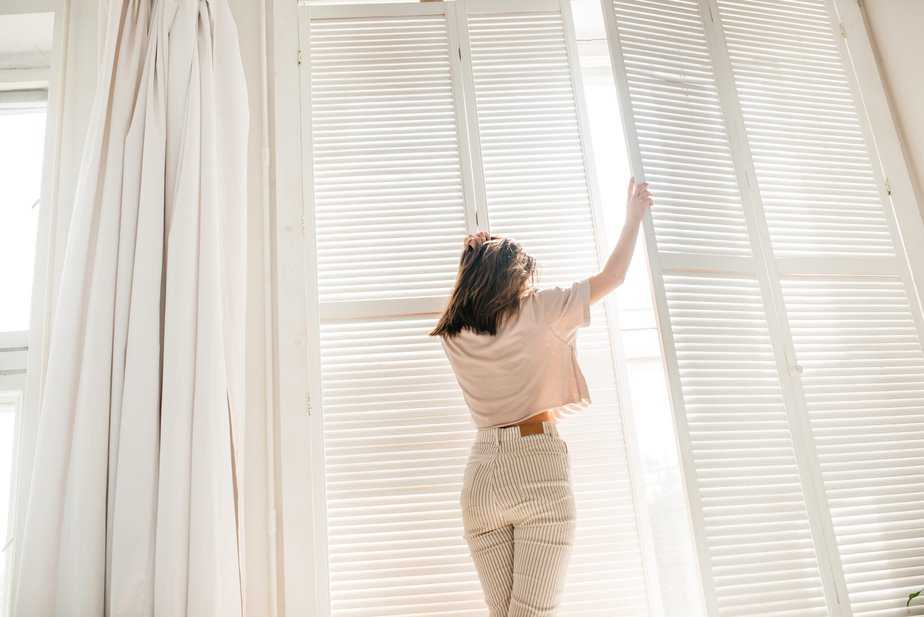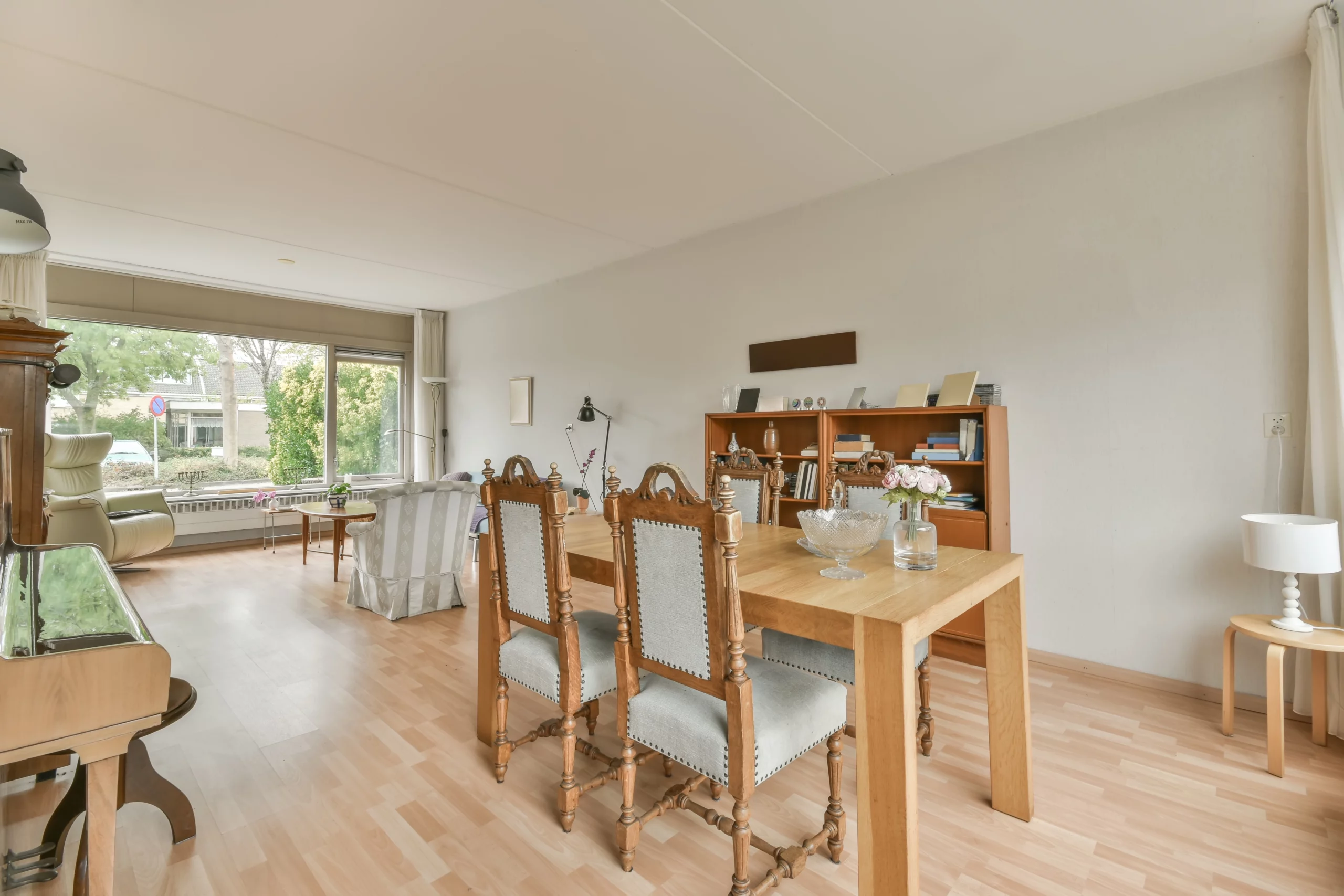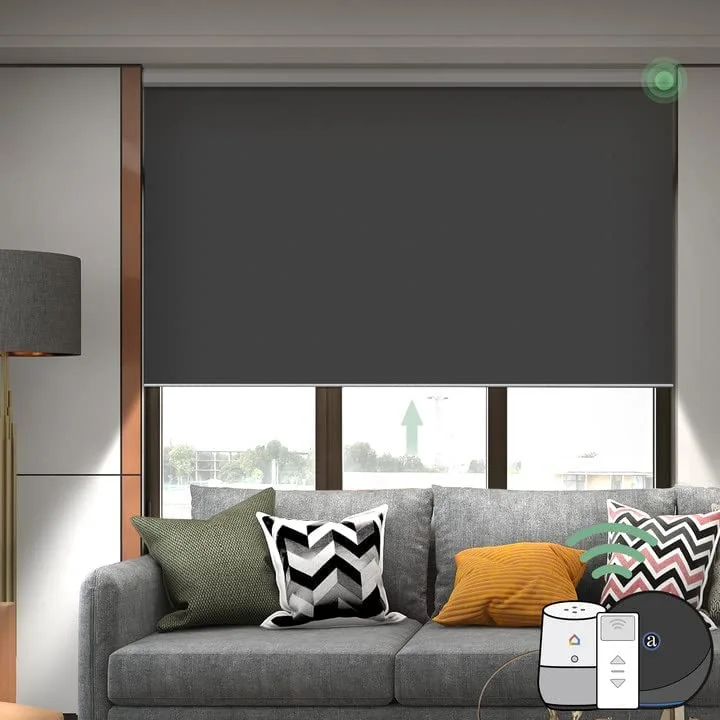Window Treatments can be described as elements (both decorative and productive) that are added to the windows and doors in your home. Examples include curtains, window blinds, shades, shutters and drapes.
Most people simply call them blinds or shades as these are the most popular products that people choose.
The words window treatments and window coverings are also used interchangeably, but ultimately, they share the same purpose – maintain the right levels of light, provide privacy, and manage heat – both keeping heat in and trapping heat out, depending on the season.
Window coverings are made from two types of core materials, hard and soft.
Hard materials are normally used for blinds and shutters, as many are made from wood, faux wood, aluminum, steel, vinyl, and composite wood.
Soft materials (fabrics) are used for drapes, valances, classic curtains, shades, and awnings.
What are Window Treatments and their Types:
Blinds:
Generally, a blind is a window covering made up of individual slats. A blind is usually made from hard materials (wood, faux wood, vinyl, aluminum).
Blinds with both horizontal or vertical slats can go up and down, or side to side and be tilted to allow just the right amount of light to enter a room.
The most common types of blinds chosen are:
- Venetian blinds: A horizontal blind with horizontal slats.
- Vertical blinds: A track with vertical hanging strips available in many materials.
- Panel blinds: Most suitable for oversized windows and sliding glass doors.
Shades:
A shade is a softer window treatment made from one piece of material.
The fact that shades are made from single pieces limits their ability to be adjusted from side to side and control light in the same way you can with blinds. Shades come in a wide array of styles, materials, and colors.
Shades are normally controlled using a cord or spring mechanism, which folds its fabric and maneuvers the shades.
The most common types of shades chosen are:
- Roller shades: Usually made from one piece of fabric, roller shades coil around the tube of the window when drawn.
- Woven shades: Built like a screen to diffuse light and preserve privacy from the outdoors. You can get them made out of bamboo or jute.
- Cellular shades: Usually honeycomb-shaped that helps trap air, allowing heat to escape in the summer and remain inside during the winter.
- Roman shades: Formed from folds or soft pleats that stack evenly when drawn up. These shades are good at blocking out light.
Other Window Treatments:
Curtains:
Curtains are made of soft fabrics that are then mounted on the interior of the window; however, there are also outdoor curtains, which are used on patios, decks, gazebos, pergolas, and other outdoor spaces.
Curtains can either be hung using a rod or track. Curtains are often used in combination with blinds, shades or shutters to create a layered look.
Curtains are excellent for blocking and concealing light and drafts.
Drapes:
Drapes are typically made of thicker fabrics, so they’ll be more formal and luxurious than curtains. They’re custom-sized to fit your exact window dimensions which makes them perfect for those who have specific tastes in terms of style!
Valances:
Blinds, shades, curtains, and drapes can all be paired with valances. A traditional curtain rod cover that is made from an elegant material to cover it decoratively. They are generally made from cotton, polyester, silk, and wood.
Awnings:
An awning is an exterior window covering that projects from the side of a building. Awnings are composed of a metal or aluminum frame and covered in fabric.
Awnings are used to provide shade and can be retracted when not needed.
The awning is usually fixed above a window or door and usually overhangs a porch, patio, or walkway.
Awnings are available in acrylic, cotton, fiberglass, vinyl, aluminum, metal, wood, canvas, polycarbonate, and polyester.
Awnings are growing in popularity and are a wonderful addition to enhance your outdoor living space.
Selecting The Right Window Treatments For A Room:
Kitchen Window Treatments:
Window treatments for the kitchen can take on various forms and sizes.
For large windows, roman shades or cellular shades are a great option. These can be raised during the day to let in natural light and lowered at night for privacy.
If you have a window above the sink, adding a valance is a nice touch. This can be done by combining fabric with a roman shade (assuming you like the pleated look) or in a contrasting fabric to add a pop of color.
For smaller windows, roller shades or woven wood shades are a good option.
Bathroom Window Treatments:
The bathroom is another room where function is just as important as style when it comes to window coverings.
Bathroom windows are notoriously tricky to treat, aside from privacy, the most important thing to consider in such a wet and humid room is how waterproof and mold resistant the window treatment is.
The most common window treatments for bathrooms are roller shades, faux wood or aluminum Venetian blinds or vinyl shutters.
Woven wood blinds made from bamboo or natural materials can also work well. It creates a spa-like atmosphere by bringing an element of the outdoors in and adding a sense of calm to your bathroom.
Bedroom Window Treatments:
In the bedroom, the window covering you choose is more than just for adding style, you have to consider room darkening, maintaining the right temperature, and also controlling the amount of privacy you have.
Many treatments like curtains, drapes, sheers, shades, blinds, and shutters are available.
Whether you choose curtains, blackout shades, or layered drapes, the purpose is to create a relaxing atmosphere for a good day and night for relaxation and sleep.
Blackout shades or blackout curtains are excellent options for those who like their bedroom dark and want maximum privacy. Unless you mind a little sun filtering, sheer curtains and blinds are also viable options.
Living Room Window Treatments:
Choosing the great window treatment for a living room depends more on personal preference than choosing one for a bathroom or kitchen.
Shades are probably a great option if you want something modern and minimalist.
Adding sheer curtains will create an almost ethereal atmosphere, while layered, heavy drapes will look more traditional. Not sure what to choose? Consider a combination of shades and curtains.
Drapery is an excellent way to add a splash of color. Large windows or French doors usually need to be partially covered. You elevate that room’s design and define the focal point by adding drapes.
Dining Room Window Treatments:
In the dining room, you want to make a good impression, so again, it is important to choose window treatments that complement your décor.
Sheer curtains are a good option because they let in natural light while still providing privacy. If you have large windows, you may want to consider adding drapery on either side to frame the window and add a touch of elegance.
Shutters are also a good option for the dining room because they provide privacy when you need them and can be opened to let in natural light.
What Are The Materials Used For Window Treatments?
As we have established, there are many different types of window treatments available, but to add even more complexity, many of the options are also available in a wide range of materials such as:
- Wood
- Faux Wood
- Fabric
- Bamboo
- Vinyl
- Aluminum
Wood: It is one of the classic materials used for window coverings as they have very high durability as well as adding a stylish touch. However, the maintenance and cleaning are higher compared to other materials. Blinds and shutters are the commonly used wood window treatments.
Faux Wood: These materials are usually moisture-resistant. So, they don’t bend and warp when in a humid room.
As a result, faux wood window treatments are perfect for high-humidity rooms like bathrooms and kitchens. Faux wood is a very common material for a range of blinds such as Venetian blinds.
Fabric: These soft materials are used for window treatments/coverings such as curtains, shades, and woven blinds. Fabric window treatments are very easy to maintain and clean.
Bamboo: Also, commonly known as woven wood, bamboo window treatments give a beautiful natural look. Blinds and shades (Roman Shades) are commonly made from bamboo.
Bamboo is quite versatile and good for letting in natural light, however, Bamboo is not a good choice for rooms where you need complete privacy as they can be seen through.
Vinyl: One of the highly durable materials used for many of the window coverings on the market. Venetian blinds, vertical blinds, roller shades, and plantation shutters can all be made of vinyl.
The biggest benefit of vinyl window treatments is the ease to clean and generally lower cost.
Aluminum: Also known as metal blinds. They are lightweight and durable window treatment materials. They are fully functional, durable, easy to install, and clean. They are also good for customized products.
Modern Window Treatment (or) Contemporary Window Treatments:
Modern design is sometimes confused with contemporary style due to its minimalist look.
However, the main difference between the two is that contemporary style is ever-evolving and can change with current design trends, whereas modern design refers to a specific period in time.
Motorized Window Treatments:
Automated window treatments are becoming increasingly popular in modern households. Many of the traditional window treatments can be motorized or automated. For example, you can get motorized blinds, shades, and drapes at a reasonable price if you shop around.
Motorized blinds and shades are a modern spin on classic window coverings, however, gone are the days when you have to manually open or close the blinds.
Smart Window Treatments:
Smart blinds and shades are the latest trend in window coverings and go one step further from their motorized counterparts. They are also automated but can be controlled via an app on your smartphone or tablet or even via voice using one of the smart services such as Alexa.
One of the greatest benefits of smart blinds has to be how they can be programmed to open and close at certain times of the day. This means you can let in natural light when you wake up in the morning
Both motorized and smart window treatments are more expensive but in today’s modern world they are becoming the norm in new build residential and commercial properties.
Minimalist Window Treatments:
Minimalist window treatment has a clean, sleek look that does not take away from the beauty of the window itself. An excellent way to achieve a minimalist look is to choose shades, shutters, or blinds that are the same color as the window frame.
Conclusion
As the name suggests, “window treatments” are used for windows as a covering to help reduce the heat, filter light, and at the same time ensure privacy in the home. Even installing them can lower your energy bills.
There are a wide variety of window treatments available on the market, each with its own unique set of benefits.
It’s important to consider the specific needs of your home or office when choosing the right one for you. With so many options available, your search will no doubt take some time, but hang in there, there is sure to be a perfect solution for every space!



